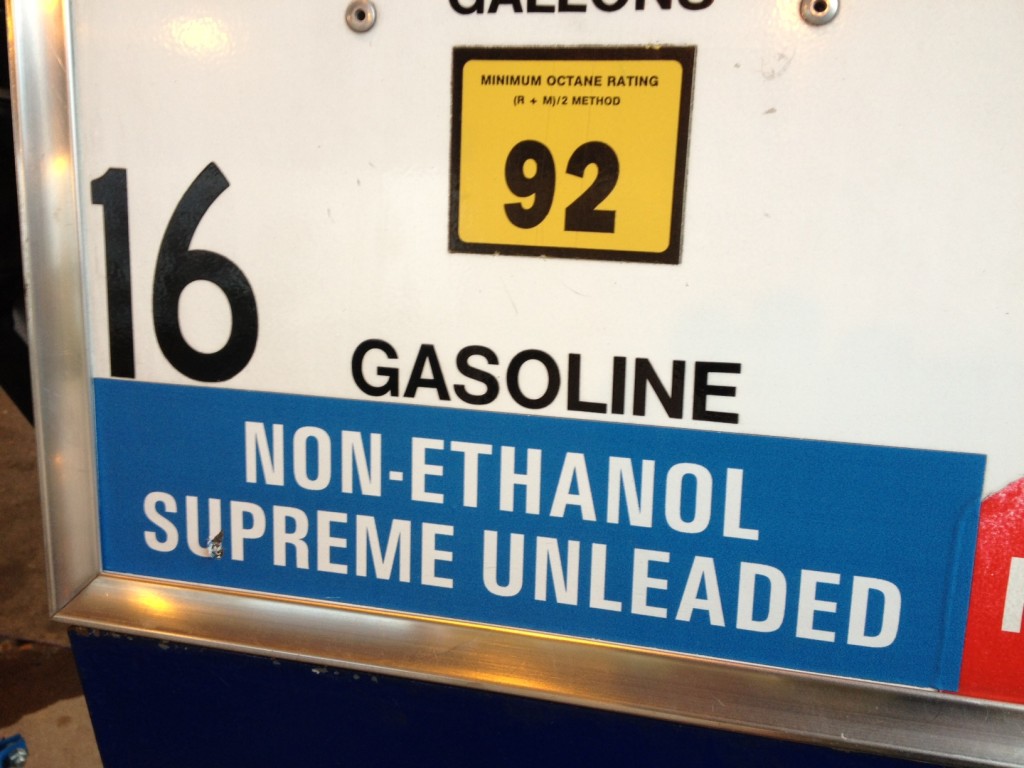Today, the EPA acted on a proposed change to expand the amount of ethanol that can be mixed into pump gasoline from June 1 to September 1.
In an official announcement, the agency made no comment about how the move might affect summer air quality or pollution issues. The EPA said that it “delivers on President Trump’s promise,” and pointed to farm and ethanol interests, including fuel facilities in Iowa and Nebraska.
The finalized action signed by EPA Administrator Andrew Wheeler removes the current restriction to using more than 10 percent ethanol in pump gasoline during summer months by revising or replacing a current waiver.
Ethanol in pump gasoline serves as a reminder that renewable fuels may not always be the best choice for the environment. Especially in hot summer weather, the higher ratio of ethanol in gasoline has been linked to ground-level ozone issues, or smog. The current Reid Vapor Pressure waiver exists because when ethanol is mixed into gasoline at higher amounts it evaporates too quickly.
In recent years it’s been hard to find widespread support for ethanol outside of agribusiness. It’s one of the few issues in which oil refiners and environmentalists are together in opposition. Also allied against it are boaters, ATV enthusiasts, and classic-car collectors, as ethanol can cause fuel system corrosion and other issues—although it’s cleared for use in passenger vehicles from the 2001 model year on. In the absence of federal limitations, a number of states have moved to limit or ban it.
Former Trump-appointed EPA Administrator Scott Pruitt was also not in the pro-ethanol corner—underscoring a key point where he and his successor, current administrator Wheeler, sharply differ.

Non-ethanol gasoline pump
When asked by Green Car Reports for clarification on the timeline, the U.S. EPA responded that retail stations would be allowed to sell E15 at the same vapor pressure currently allowed for E10 starting June 1. "EPA is not pre-empting state and local rules on the matter," the EPA told us.
The agency also today announced that it is seeking to change the set of rules governing the trade of credits—called Renewables Identification Numbers (RIN)—that track how ethanol is being blended into the supply of pump gasoline.
Ethanol interests have long declared the system broken, as Wall Street investors were holding onto RIN as investments, keeping them and the ethanol they allowed out of the market at uneven intervals. Ethanol interests have been saying for years that adding ethanol to gasoline has a stabilizing effect on gas prices, but we haven’t found an impartial source that has concluded such a thing
According to the U.S. Energy Information Administration, ethanol has about 33 percent less energy content than “pure gasoline,” and thus an E10 blend can be expected to return a drop in fuel economy of about 3 percent. Other sources point to about a 5-percent drop in efficiency for E15, which has been available in some regions of the country for years in some reformulated gasoline.
In the meantime, you may want to check the pump—and your owner's manual. As of the 2019 model year, BMW, Mini, Mazda, Mitsubishi, and Subaru are among the automakers with at least some models that are not approved for E15.













